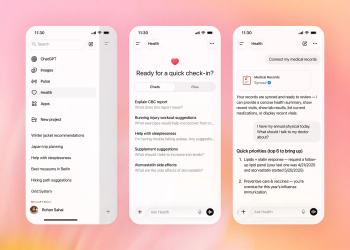
Will the healthcare transformation sparked by COVID-19 be permanent?
Everyone acknowledges the healthcare transformation was overdue long before 2020, but the pandemic forced the issue.
After months upon months of anxiety and uncertainty, a light at the end of the COVID-19 pandemic appears to be
In the U.S.,
As we all transition into a post-pandemic reality, it will be crucial to note which industries regress to past practices and which ones are forever altered by this monumental global event.
When analyzing the current landscape, it’s clear that this healthcare transformation is permanent — and perhaps for the better.
How healthcare adapted to COVID
More than any other industry, healthcare felt the effects of the pandemic. As a worldwide health emergency continued to persist, care providers had to meet that overwhelming demand while protecting front-line personnel from the virus.
Healthcare workers adapted efficiently and creatively with strategies that are shaping the future of healthcare. Healthcare isn’t known for using technology enthusiastically or innovatively, evidenced by the fact that healthcare can take as long as 18 months to make seemingly minor tech changes.
The pandemic forced many hospitals and clinics to pivot and quickly implement new offerings, such as telehealth services. It was a calculated move when considering many healthcare providers didn’t have the infrastructure to support these services early in the pandemic.
Part of the need to move toward telehealth solutions was due to social distancing requirements and public health measures, but insurance reimbursements also played a significant role. Payers increased reimbursements above the previous rate of 20% of in-person visits, making telehealth economically viable in new ways. For physicians, telehealth solutions allow them to provide more accessible and flexible treatment.
This begs the question: Are telehealth and similar solutions here to stay even after the pandemic ends?
The new normal
No matter what healthcare transformation looks like in the post-pandemic period, there are compelling reasons to think virtual healthcare will play an ongoing role.
For one, healthcare organizations have spent the past year accruing the equipment and expertise needed to make telehealth, remote work, video conferences, and all kinds of digital interactions possible on a vast scale. They have a natural incentive to continue leveraging these new resources instead of scrapping them for the status quo.
Healthcare providers will also face pushback if they move away from telehealth solutions now that we’ve seen how effective they can be. Physicians, patients, and even healthcare administrators know that telehealth replicates in-person visits and improves them in many ways.
Reimagining healthcare delivery
Some healthcare delivery experiments undertaken during the pandemic proved so successful they are likely to become permanent. Here are a few we see continuing to emerge:
Digital monitoring: By implementing a telehealth program, any interaction that doesn’t require direct contact could realistically become a virtual session. Telehealth especially becomes useful when digital tools can monitor items like heart rate, blood sugar, and cholesterol — and then send that data to the healthcare organization for ongoing monitoring and analysis.
Instead of disrupting the connection between patients and doctors, telehealth solutions transcend physical distance and bridge the gap. The boundary-breaking capabilities of telehealth are why it’s shaping the future of healthcare.
Digital touchpoints: Patient care’s standard operating procedure in the past was all about the in-person experience. You’d make an appointment and then visit a primary physician or go to the hospital.
Digital touchpoints (e.g., online portals, mobile apps, or internet-connected devices) are contributing to healthcare transformation and rewriting the rules for delivering care. The future of healthcare will be less about getting care from the specialized places where it’s available and more about accessing it anywhere, on-demand, and without friction.
Parking lot appointments: Offering COVID-19 tests and vaccinations in parking lots proved to be an effective defense against infectious disease and an efficient healthcare delivery model. Some form of drive-thru care could become common as healthcare workers try to provide care while keeping infectious patients out of waiting rooms. This is precisely the kind of outside-the-box idea that would have seemed off-limits pre-pandemic. Now, it’s a proven commodity.
Everyone acknowledges the healthcare transformation was overdue long before 2020, but the pandemic forced the issue. While COVID-19 has taken a terrible toll, it may result in some lasting good: Healthcare that works better for patients, providers, and payers alike.
Newsletter
Stay informed and empowered with Medical Economics enewsletter, delivering expert insights, financial strategies, practice management tips and technology trends — tailored for today’s physicians.








